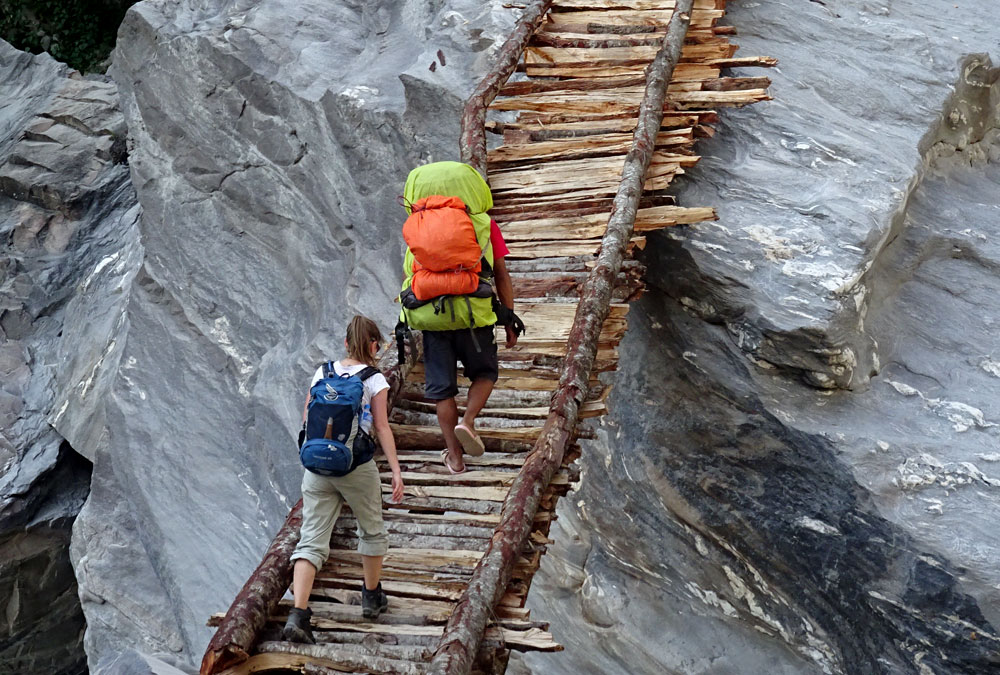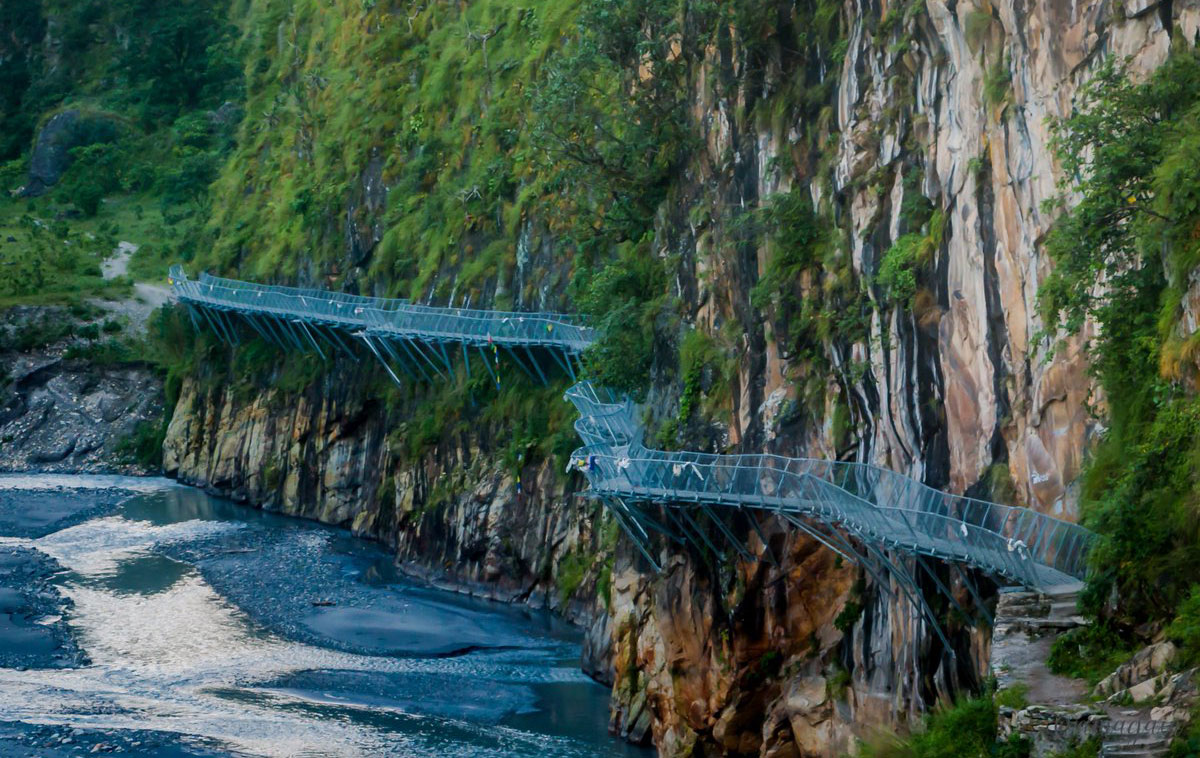A cantilever bridge has been constructed at Yarubagar, which connects seven northern villages of Gorkha district. The bridge is built across the Budhigandaki River to connect Sirdibash and Kerauja VDCs. According to the District Development Committee, the bridge is the first of its kind in Nepal. The bridge at the Manaslu foot trail is the only pathway connecting the VDCs with the district headquarters. Chief Engineer Sahadev Bahadur Bhandari of the District Technical Office said the bridge was constructed by engineers and workers from Switzerland.
 A temporary woodern bridge just after the earthquake in Manaslu trail near somewhere between Thulodunga and Jagat in 2015
A temporary woodern bridge just after the earthquake in Manaslu trail near somewhere between Thulodunga and Jagat in 2015
The bridge construction have not only made daily life easier in the area but also it is easy access to the Nepal's one of the most popular Manaslu trekking route. The trail has long been famous lately amongst wilderness holiday seekers and marathoners in Nepal.
More Rough country than many of Nepal’s more established trekking areas, this isolated wilderness offers insights into genuine Hindu and Tibetan-style Buddhist villages and outstanding views of the two-horned Mt Manaslu (8,156m) and four 7,000m peaks in the Ganesh massif. But the trails here serve a far more important function than simply the enjoyment of tourists. They are the lifeblood of Nepal’s mountain communities, connecting people with health posts and government offices, providing access to essential commodities and enabling children safer passage to schools.
 Nepal's first cantilever Bridge to Manaslu Trekking Trail
Nepal's first cantilever Bridge to Manaslu Trekking Trail
The structure was constructed by drilling the rocky cliff of Yarubagar. The UK Department for International Development built the bridge after its successful experiment at Godavari in Kathmandu. One of the representatives of the DFID said the construction had taken them three months. Rs30 million was spent on it, he said. Construction materials were delivered by helicopter to the site due to the difficult geography.
The average life span of the bridge is 50 years. There used to be wooden bridges in Yarubagar. However, the northern VDCs were cut off from the district headquarters after the flooded Budhigandaki swept away a wooden bridge at Yarubagar two weeks ago. Upgrading these trails, for instance building bridges across rivers and ravines, can shave hours off daily journeys, change the price of local commodities like rice and lentils and also make it easier for tourists to explore rural areas. Similarly, destroyed trails can have a disastrous impact on peoples’ livelihoods.






